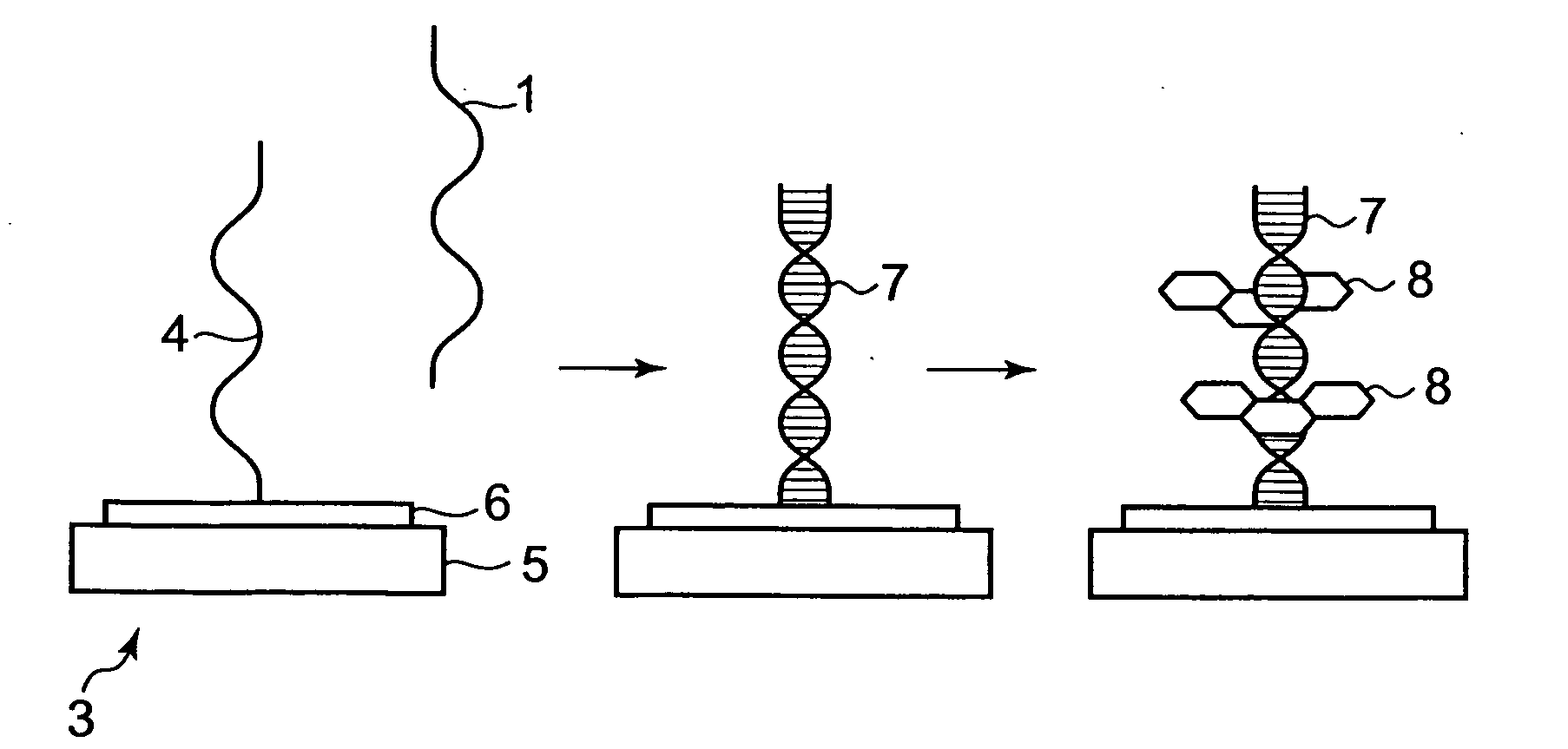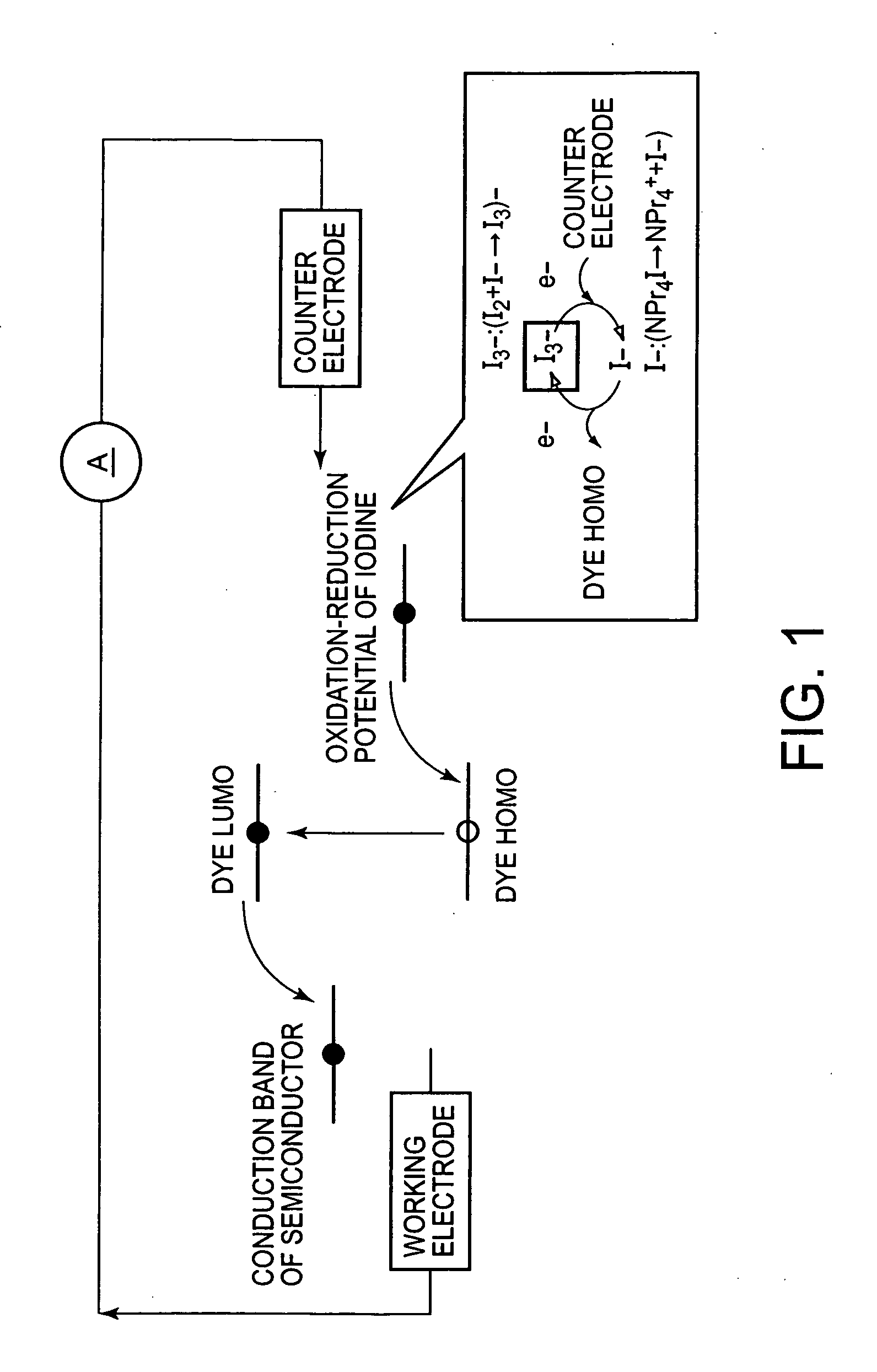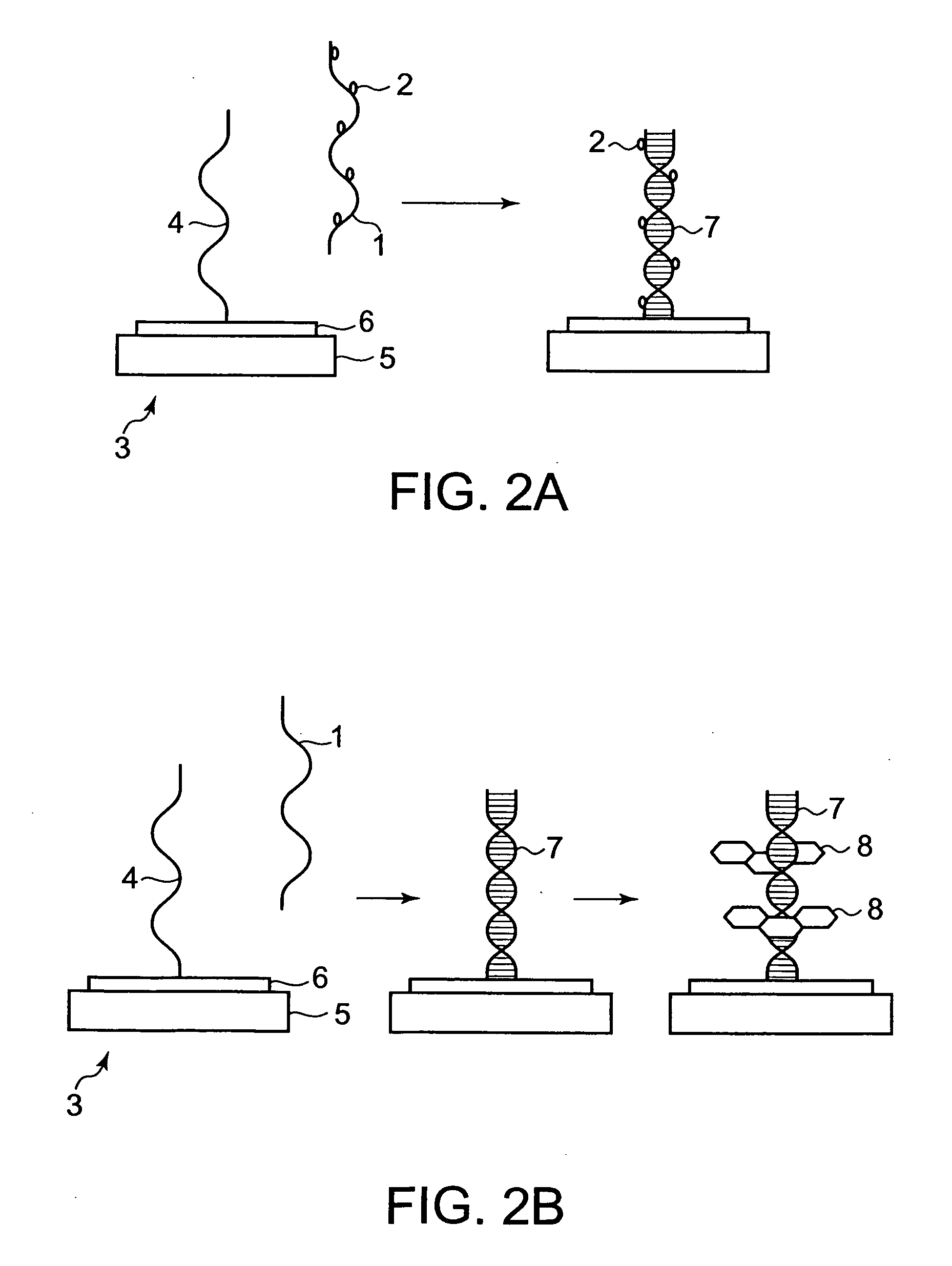Method for Specifically Detecting Analyte Using Photocurrent, and Electrode, Measuring Cell and Measuring Device for Use Therein
- Summary
- Abstract
- Description
- Claims
- Application Information
AI Technical Summary
Benefits of technology
Problems solved by technology
Method used
Image
Examples
example 1
Reference
[0167]This example shows that the photoelectric conversion can be achieved even in the bond through a silane coupling agent. Specifically, the conductive faces of an FTO glass and an ITO glass were treated with the silane coupling agent to introduce an amino group onto the surfaces. The amino group was made react with a dye having an active ester group so that the dye was immobilized by a covalent bond. This was irradiated with exciting light, and the photocurrent was measured. The details are as follows.
[0168]A fluorine-doped tin oxide (F—SnO2:FTO) coated glass (produced by Al Tokushu Garasu Company, U-film, sheet resistance: 15Ω / □0) and a tin-doped indium oxide (Sn—In2: ITO) coated glass (produced by Toyo Seimitsu Kogyo Kabushiki Kaisha, 100Ω / □) were subjected to ultrasonic cleaning in an acetone, then in ultra-pure water including 0.1 vol % of Tween20, and further in ultra-pure water for 15 minutes each to remove contaminant and residual organic substance. Then, the glas...
example 2
Reference
[0175]This example shows a difference between the current values observed in the complementary DNA and non-complementary DNA. Specifically, an FTO glass was treated with the silane coupling agent to introduce an amino group onto the surfaces. The amino group and the probe DNA were bonded with electrostatic action to each other, followed by ultraviolet-ray irradiation to form a covalent bond to immobilize the probe on the electrode. This was hybridized with target DNA labeled with Cy5, and then irradiated with exciting light, followed by measurement of the photocurrent. The details are as follows.
[0176]A fluorine-doped tin oxide (F—SnO2:FTO) coated glass (produced by AI Tokushu Garasu Company, U-film, sheet resistance: 15Ω / □) was subjected to ultrasonic cleaning in an acetone, then in ultra-pure water including 0.1 vol % of Tween20, and further in ultra-pure water for 15 minutes each to remove contaminant and residual organic substance. This was shaken for 15 minutes in 5M a...
example 3
[0198]This example shows a difference between the current values of an electrolyte solution including metallic iodine and an electrolyte solution not including it, and shows that the electrolyte solution without the metallic iodine has the advantage over the other in the detection of single nucleotide conversion (SNPs). Specifically, an FTO glass was treated with the silane coupling agent to introduce an amino group onto the surfaces. The amino group and the probe DNA were bonded with electrostatic action to each other, followed by ultraviolet-ray irradiation to form a covalent bond to immobilize the probe on the electrode. This was hybridized with target DNA labeled with rhodamine, and then irradiated with exciting light, followed by measurement of the photocurrent to detect the single nucleotide conversion on the target. The details are as follows.
[0199]A fluorine-doped tin oxide (F—SnO2:FTO) coated glass (produced by AI Tokushu Garasu Company, U-film, sheet resistance: 15Ω / □) was...
PUM
| Property | Measurement | Unit |
|---|---|---|
| Time | aaaaa | aaaaa |
| Concentration | aaaaa | aaaaa |
| Structure | aaaaa | aaaaa |
Abstract
Description
Claims
Application Information
 Login to View More
Login to View More - R&D
- Intellectual Property
- Life Sciences
- Materials
- Tech Scout
- Unparalleled Data Quality
- Higher Quality Content
- 60% Fewer Hallucinations
Browse by: Latest US Patents, China's latest patents, Technical Efficacy Thesaurus, Application Domain, Technology Topic, Popular Technical Reports.
© 2025 PatSnap. All rights reserved.Legal|Privacy policy|Modern Slavery Act Transparency Statement|Sitemap|About US| Contact US: help@patsnap.com



